Modern and luxury home designs represent the epitome of sophistication and cutting-edge innovation in architecture. These homes are a blend of high-end materials, sleek aesthetics, and functional layouts.
Whether it’s a modern mountain retreat, an eco-friendly container home, or an organic modern design, the key is to combine elegance with comfort.
Here’s an exploration of the most striking modern and luxury home designs, each tailored for different lifestyles and environments.
Luxury Modern Homes
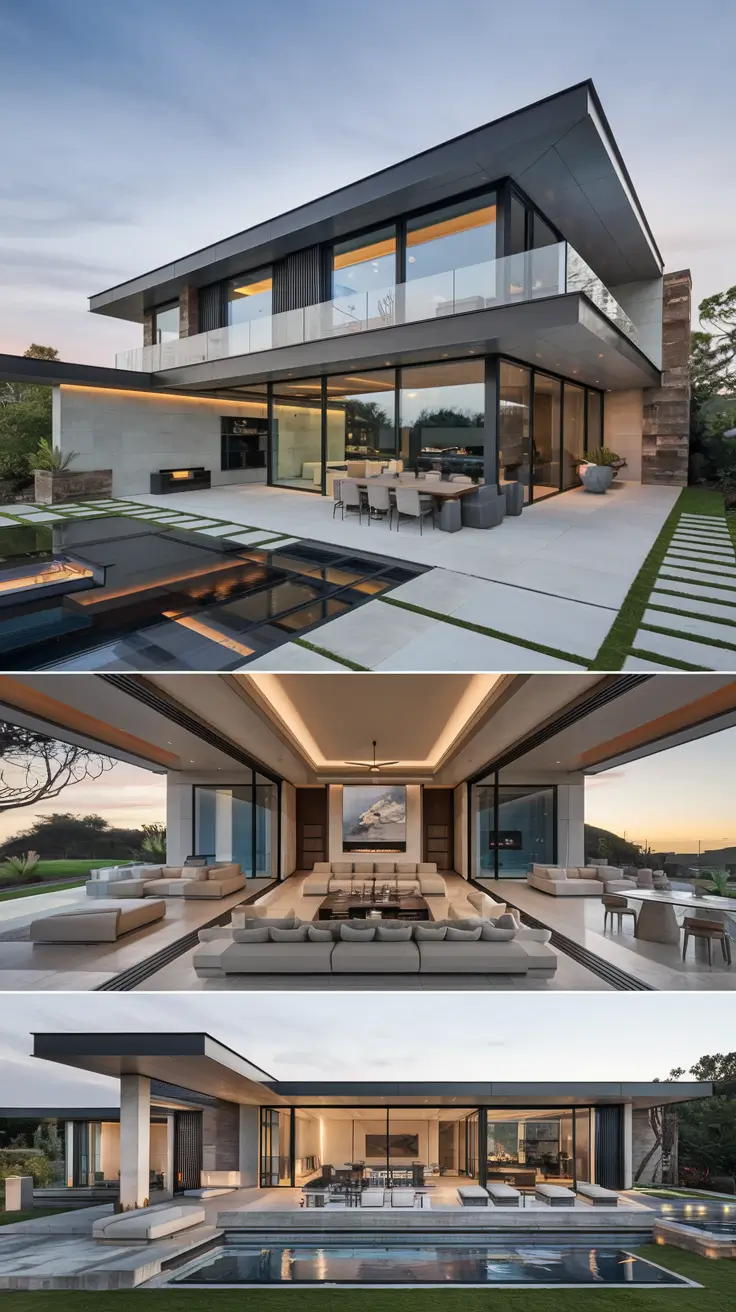
Luxury modern homes are a fusion of minimalist design principles with high-end finishes and smart technology. These homes prioritize open spaces, clean lines, and state-of-the-art amenities, offering a lifestyle of convenience and luxury. Here’s what defines a luxury modern home:
- Sleek and Minimalist Aesthetic: Luxury modern homes often feature a minimalist design with flat roofs, large glass windows, and an emphasis on horizontal lines. The exteriors are typically clad in materials like steel, concrete, and glass, creating a seamless connection between indoor and outdoor spaces.
- Open Floor Plans: The hallmark of a modern luxury home is its open floor plan, which combines the living room, dining area, and kitchen into one large, uninterrupted space. This layout maximizes natural light and provides a sense of openness and flow.
- Smart Home Technology: These homes incorporate the latest in smart home technology, including automated lighting, climate control, security systems, and integrated sound systems, all of which can be controlled remotely.
- High-End Materials: Luxury modern homes use top-of-the-line materials such as marble, granite, and exotic woods. Flooring is often made of polished concrete or hardwood, while countertops feature quartz or natural stone.
- Indoor-Outdoor Living: Large sliding glass doors or bi-fold doors are often used to blur the line between indoor and outdoor spaces, leading to spacious patios, terraces, or even infinity pools.
Modern Mountain Home
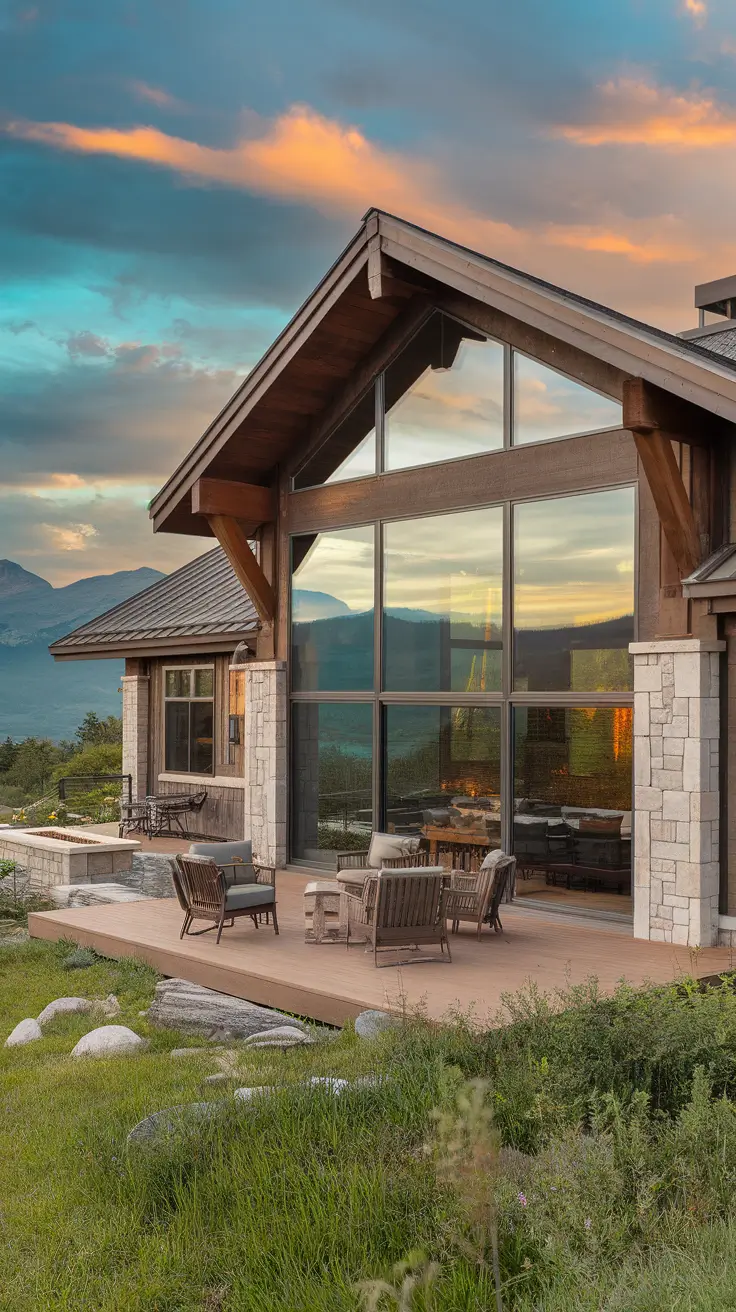
Modern mountain homes blend the rustic charm of traditional mountain architecture with sleek, contemporary elements. These homes are designed to harmonize with their natural surroundings while offering all the comforts of modern living. Here’s how to achieve the perfect modern mountain home design:
- Natural Materials: Stone, wood, and glass are the primary materials used in modern mountain homes. Timber beams, stone fireplaces, and large glass walls help integrate the home with the surrounding landscape.
- Large Windows and Views: Floor-to-ceiling windows are essential in modern mountain homes, offering expansive views of the surrounding mountains, forests, or lakes. These windows not only flood the home with natural light but also bring the beauty of the outdoors inside.
- Open-Concept Living: The open floor plan is a common feature in modern mountain homes, allowing for seamless transitions between the living room, dining room, and kitchen. This open space often features vaulted ceilings and exposed beams to create a grand, airy feel.
- Outdoor Living Spaces: Mountain homes often feature large outdoor spaces such as wrap-around decks, patios, and fire pits. These areas are designed for relaxation and entertaining, providing the perfect place to enjoy the natural scenery.
- Energy Efficiency: Modern mountain homes often incorporate energy-efficient features such as solar panels, geothermal heating, and advanced insulation. These eco-friendly features reduce the home’s carbon footprint while keeping energy costs low.
Organic Modern Home
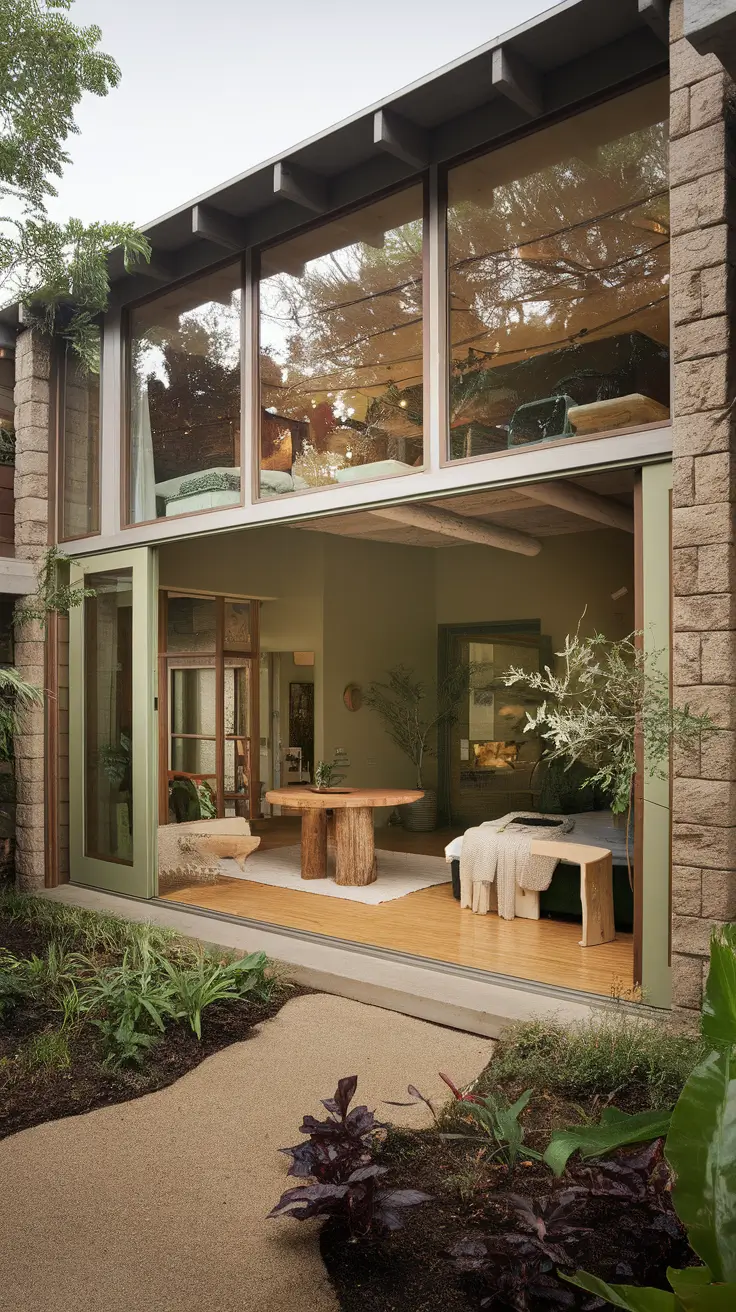
An organic modern home blends the simplicity of modern design with the natural beauty of organic materials, creating a harmonious living environment that feels connected to nature. This style focuses on sustainable materials, neutral color palettes, and a sense of tranquility. Here’s how to design an organic modern home:
- Sustainable Materials: Organic modern homes prioritize the use of eco-friendly materials such as reclaimed wood, bamboo, and natural stone. These materials not only enhance the aesthetic appeal but also reduce the home’s environmental impact.
- Earthy Color Palettes: The color schemes in organic modern homes are inspired by nature, featuring shades of white, beige, soft gray, and muted greens. These colors create a calming, serene atmosphere.
- Minimalist Design with Organic Forms: While the design remains minimalist, the use of organic shapes and curves softens the overall look. Think rounded furniture, curved walls, or arched doorways that break away from rigid lines.
- Seamless Indoor-Outdoor Connection: Large windows, sliding glass doors, and open spaces create a seamless flow between the indoors and outdoors, allowing natural light to pour in. Indoor plants and greenery also play a key role in enhancing the connection to nature.
- Natural Textures: Texture plays a vital role in organic modern homes. From woven rugs to linen upholstery and wooden furniture, incorporating a variety of natural textures creates depth and warmth.
Vaulted Ceiling Beams
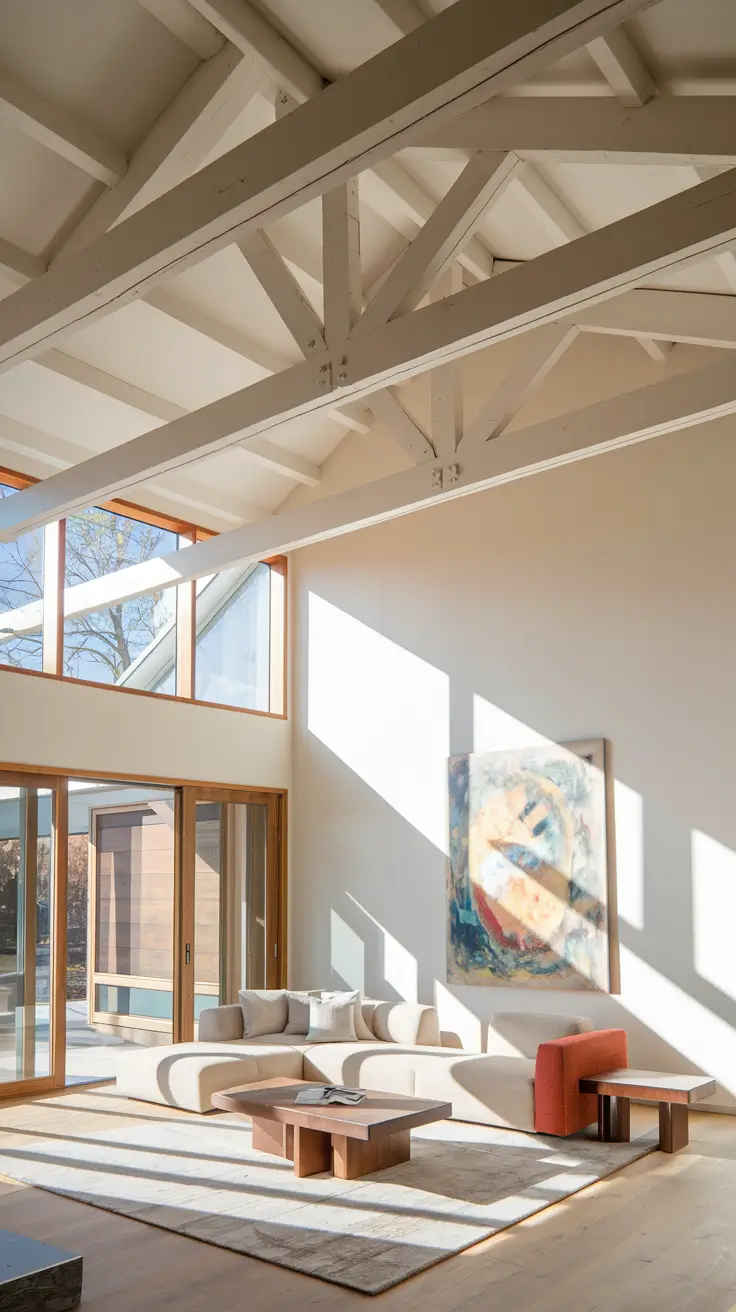
Vaulted ceilings with exposed beams are a design feature that adds architectural interest and a sense of spaciousness to any home. Whether used in a traditional or modern context, these beams offer a rustic, yet elegant touch. Here’s how vaulted ceiling beams enhance modern and luxury homes:
- Exposed Wood Beams: Wooden beams add warmth and character to a space, contrasting beautifully with sleek modern finishes. In luxury homes, these beams are often stained dark for a more dramatic effect or left in their natural color to highlight the wood’s grain.
- Creating Vertical Space: Vaulted ceilings draw the eye upward, making a room feel more open and expansive. This feature is particularly popular in living rooms and great rooms, where it enhances the sense of grandeur.
- Light and Airy Feel: Despite the rustic nature of exposed beams, vaulted ceilings can make a space feel light and airy, especially when paired with large windows or skylights that flood the room with natural light.
- Modern Interpretations: In modern homes, vaulted ceilings with beams may feature steel or painted beams for a more industrial look. The beams can be integrated into a minimalist design, creating a striking contrast between modern and traditional elements.
Organic Architecture
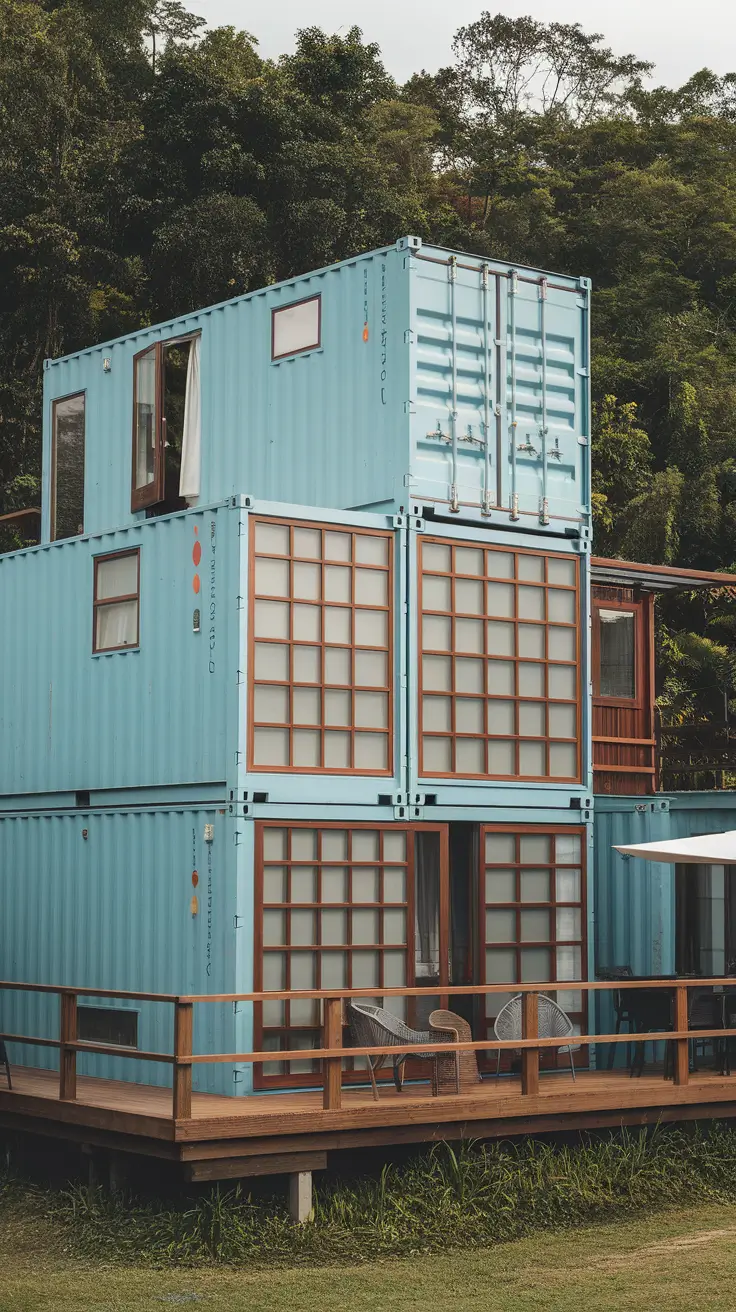
Organic architecture is a design philosophy that seeks to create harmony between human habitation and the natural world. This approach emphasizes sustainability, the use of natural materials, and the integration of the home into its surrounding environment. Here’s what defines organic architecture:
- Integration with Nature: Organic architecture focuses on building homes that blend into their natural surroundings. This could mean designing the home to follow the contours of the land or incorporating large windows to capture natural views.
- Sustainable and Natural Materials: Homes built with organic architecture principles use sustainable materials such as wood, stone, and earth. These materials are chosen for their minimal environmental impact and their ability to age beautifully over time.
- Flowing, Curvilinear Forms: Rather than relying on rigid, geometric forms, organic architecture often incorporates flowing, curvilinear shapes that mimic the forms found in nature. These designs create a sense of movement and fluidity within the home.
- Energy Efficiency: Organic architecture prioritizes energy-efficient designs. Homes may feature passive solar heating, natural ventilation systems, green roofs, and other eco-friendly technologies to reduce their environmental impact.
- Connection Between Interior and Exterior: In organic architecture, the boundary between indoor and outdoor spaces is often blurred. This can be achieved through open floor plans, large windows, and outdoor living areas that seamlessly extend the interior space.
Container House
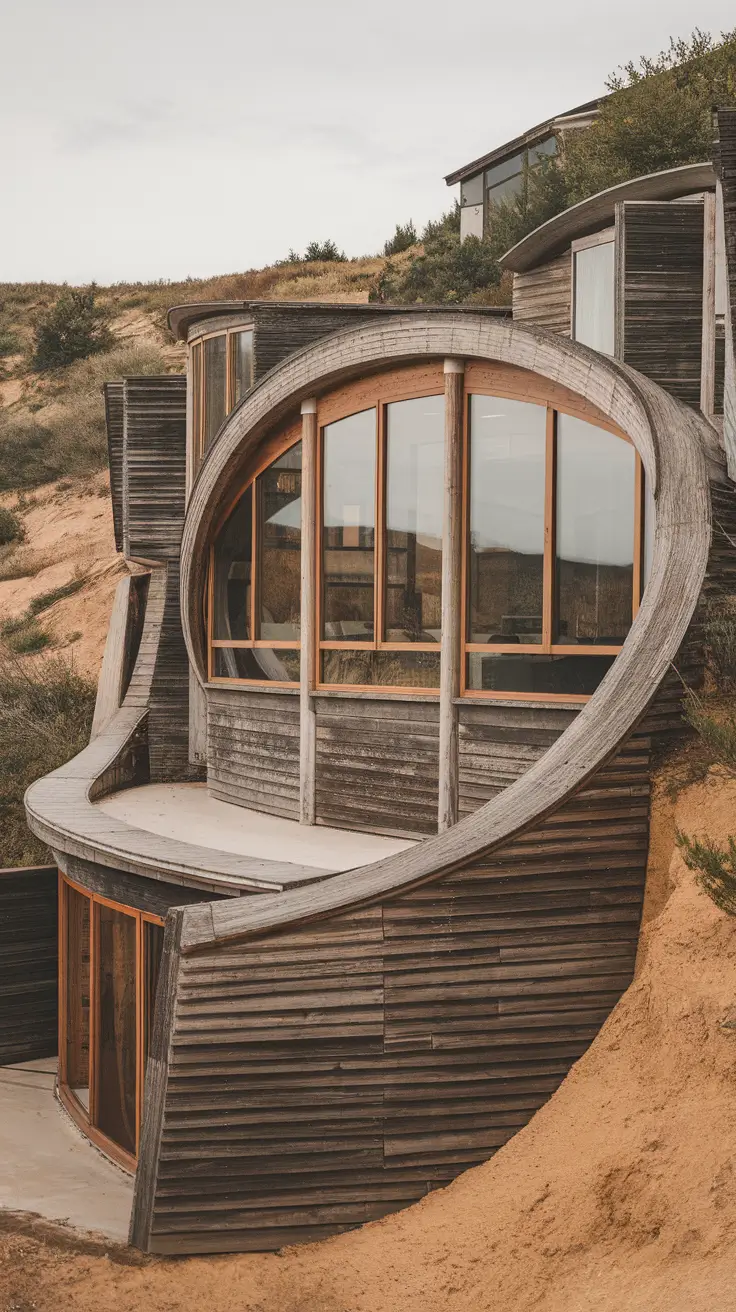
Container homes are an innovative and eco-friendly housing solution that repurposes shipping containers into modern, stylish living spaces. Known for their affordability, sustainability, and versatility, container homes have gained popularity in recent years. Here’s what to know about container homes:
- Sustainable Living: By repurposing used shipping containers, container homes promote sustainability and reduce the need for new construction materials. This eco-friendly approach makes container homes an attractive option for environmentally conscious homeowners.
- Modular Design: Container homes offer a modular design, meaning multiple containers can be stacked or arranged in various configurations to create unique layouts. This flexibility allows homeowners to customize their living space to fit their needs and preferences.
- Durability and Strength: Shipping containers are built to withstand harsh weather conditions, making them extremely durable and strong. They are resistant to water, fire, and pests, making them ideal for long-term use as a home structure.
- Minimalist Aesthetic: Container homes typically feature a minimalist, industrial design. The sleek metal exterior can be left as-is for a modern, industrial look or clad with materials like wood, stucco, or brick for a more traditional appearance.
- Off-Grid Living: Many container homes are designed to be energy-efficient and self-sufficient, often featuring solar panels, rainwater collection systems, and composting toilets. This makes container homes an excellent option for off-grid living.
More Article For Help:
- Architectural Styles and Classic Homes: Timeless Designs and Influences
- Bathroom Remodel: Transforming Your Space for Functionality and Style
- Small Bathroom Ideas: Maximizing Function and Style in Compact Spaces
- Bathroom Decor Ideas: Elevate Your Space with Style and Functionality
- Small Space and Storage Laundry Room Ideas: Maximizing Efficiency and Style
- Design-Focused Laundry Room Ideas: Combining Functionality with Style
- Nursery Ideas: Creating a Dreamy Space for Your Little One
- Cozy Living Room Ideas to Transform Your Space
- 7 Cozy Nook Ideas to Transform Your Home
- 2024 Christmas Decor: Mixing Vintage Charm with Modern Trends
- Fall Wedding Ideas for a Cozy Autumn Celebration
- How to Decorate Your Home with Fall Foliage
Conclusion
Modern and luxury home designs encompass a wide range of architectural styles and principles, each offering unique features that cater to different tastes and needs. From the sleek lines and smart technology of luxury modern homes to the eco-friendly, minimalist appeal of container houses, these homes blend style, functionality, and innovation. Whether you’re drawn to the natural beauty of organic architecture, the rustic charm of a modern mountain home, or the bold statement of vaulted ceiling beams, these designs provide endless possibilities for creating a home that’s both luxurious and livable.

